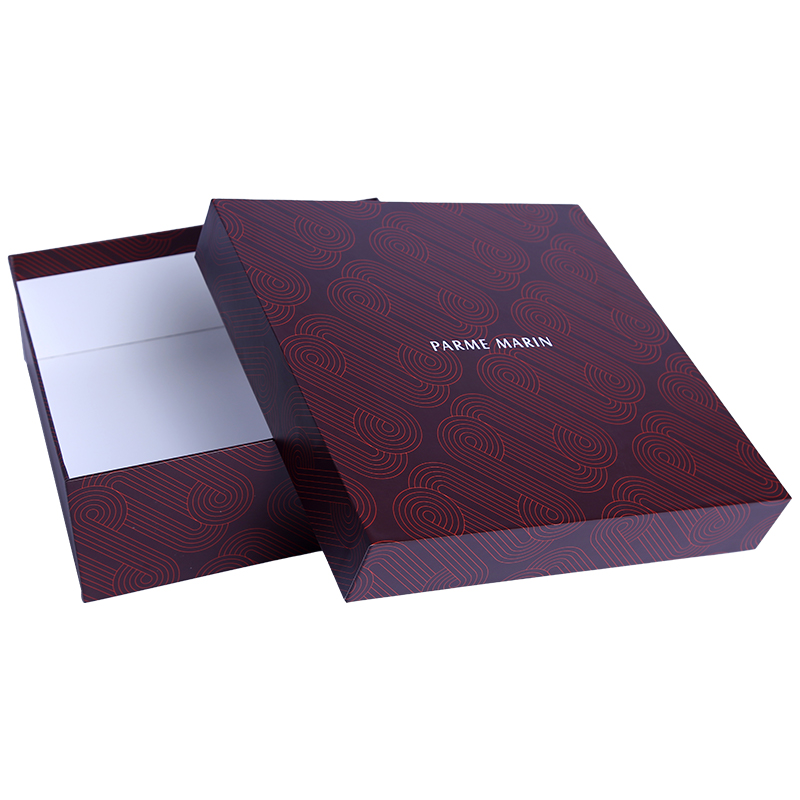-
 +86-0557-3781111 / +86-0571-56396277
+86-0557-3781111 / +86-0571-56396277
 +86-0557-3781111 / +86-0571-56396277
+86-0557-3781111 / +86-0571-56396277
Ventilation is important in apparel packaging boxes for certain types of clothing because it helps maintain the quality, freshness, and condition of the garments. Here’s why ventilation matters and how it benefits different types of clothing:
Moisture Control
Prevents Moisture Build-Up: Ventilation allows air to circulate within the packaging, reducing the chances of moisture accumulation inside the box. This is especially important for natural fibers like cotton, wool, or silk, which can absorb moisture from the environment.
Reduces Risk of Mold and Mildew: Moisture trapped inside a sealed packaging box can create a damp environment, which is ideal for mold and mildew growth. Ventilated boxes help to prevent this by allowing excess humidity to escape, keeping the clothing dry.
Odor Prevention
Avoids Unpleasant Odors: Clothing stored in sealed boxes for extended periods can develop a stale or musty smell due to the lack of air circulation. Ventilation helps to keep air flowing, which can prevent the buildup of odors, especially in natural fabrics that tend to absorb and retain smells.
Maintains Freshness During Storage and Shipping: For items that may be stored for long periods before reaching the customer, ventilation ensures that the clothing remains fresh by minimizing trapped odors and promoting airflow.
Temperature Regulation
Prevents Overheating: In warm or hot environments, sealed boxes can trap heat, potentially damaging heat-sensitive materials like leather, silk, or certain synthetic fabrics. Ventilation helps to moderate the temperature inside the box, providing a more stable environment for the clothing.
Reduces Temperature Fluctuations: Packaging with ventilation can help even out temperature changes, which is important for clothing that may be exposed to different climates during shipping.

Protection of Delicate Fabrics
Prevents Fabric Degradation: For delicate fabrics, such as lace, silk, or fine wool, exposure to moisture, heat, or stagnant air can lead to faster degradation. Ventilated packaging helps protect these sensitive materials by keeping the internal environment of the box closer to ambient conditions.
Minimizes Static Build-Up in Synthetic Fabrics: Synthetic materials like polyester or nylon can generate static electricity when they come into contact with dry air in a sealed environment. Ventilation reduces the chance of static build-up by balancing the humidity inside the box.
Compliance with Packaging Standards
Specific Packaging Requirements for Certain Textiles: Some textiles have regulations or standards that require specific packaging conditions to preserve quality. Ventilated packaging can help meet these requirements by providing the necessary air exchange to protect the fabric.
Enhanced Customer Experience
Prevents Garment Wrinkling or Compression Damage: Ventilated packaging allows for better maintenance of the garment's shape and appearance by avoiding compression-related damage that can occur with vacuum-sealed or tightly packed boxes.
Ensures Ready-to-Wear Condition Upon Delivery: For certain premium clothing items, having a breathable packaging box helps maintain the "new" condition, so garments look and feel fresh when the customer receives them.
Special Cases: Leather and Fur
Prevents Deterioration of Leather and Fur: Leather and fur items are particularly sensitive to moisture and require proper ventilation to avoid mold growth and deterioration. Airflow helps maintain their quality by keeping them in a suitable environment.
Annhiu Address: Yishan Road and Qingshengou Road Intersection, Suzhou Economic Development Zone, Anhui, China
Tel: +86-0557-3781111
E-mail: [email protected]
Hangzhou Address: Building 3, No.286, Renliang Road, Renhe Street, Yuhang District, Hangzhou, Zhejiang, China
Tel: +86-0571-56396277
E-mail: [email protected]
Copyright © Hangzhou Shengpin Packaging Co., Ltd. All Rights Reserved.
